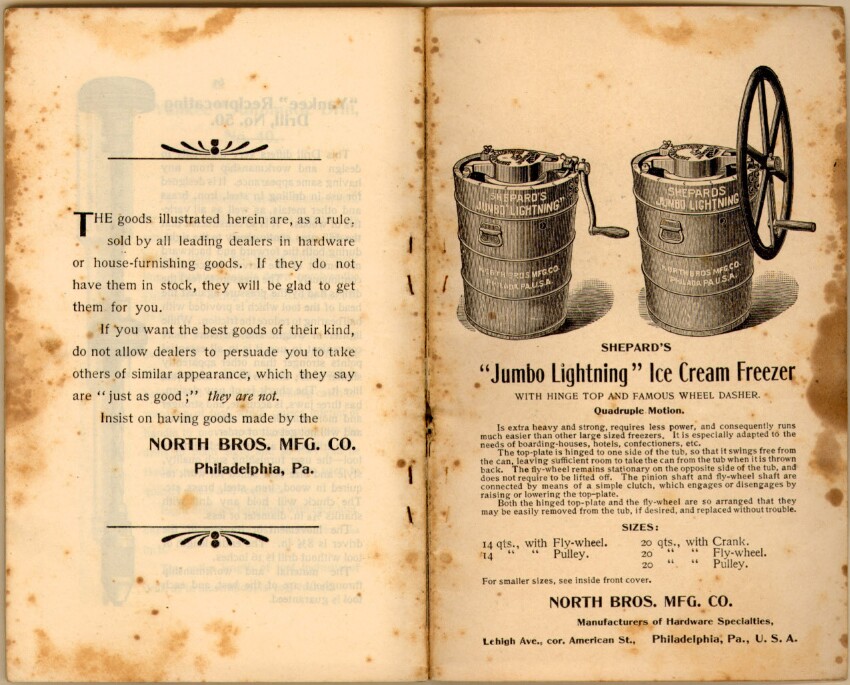
FYI: This special deal is now over…
You can see their standard 0ffer–an all-access pass to their catalogue of 70+ courses–here.

FYI: This special deal is now over…
You can see their standard 0ffer–an all-access pass to their catalogue of 70+ courses–here.
When David Lynch and Mark Frost’s Twin Peaks premiered on ABC in 1990, viewers across America were treated to a televisual experience like none they’d ever had before. Four years earlier, something similar had happened to the unsuspecting moviegoers who went to see Lynch’s breakout feature Blue Velvet, an experience described as eye-opening by even David Foster Wallace. A dedicated meditator with an interest in plunging into unexplored realms of consciousness, Lynch tends to bring his audience right along with him in his work, whether that work be cinema, television, visual art, music, or comic strips. Only natural, then, that Lynch would take an interest in the artistic and experiential possibilities of virtual reality.
Last year we featured the first glimpse of a Twin Peaks virtual reality experience in development, revealed at Lynch’s Festival of Disruption in Los Angeles. “The best news is that the company developing the game, Collider Games, is giving creative control to Lynch,” wrote Ted Mills, and now, with the release of Twin Peaks VR’s official trailer, we can get a clearer idea of what Lynch has planned for players. As Laura Snoad writes at It’s Nice That, Lynch has used the opportunity to revisit “well-known environments featured in the series, such as the iconic Red Room (the stripy-floored, velvet curtain-clad parallel universe where Agent Cooper meets murdered teen Laura Palmer), the Twin Peaks’ Sheriff’s Department and the pine-filled forest around the fictional Washington town.”
This will come as good news indeed to those of us Twin Peaks enthusiasts who’ve made the pilgrimage to Snoqualmie, North Bend, and Fall City, the real-life Washington towns where Lynch and his collaborators shot the series. But Twin Peak VR will offer a greater variety of challenges than snapping photos of the series’ locations and chatting with bemused locals: Snoad writes that each environment is constructed like an escape room. “Solving puzzles to help Agent Cooper and Gordon Cole (the FBI agent played by Lynch himself), players will also meet some of the show’s weird and terrifying characters, from the backwards-speaking inhabitants of the Black Lodge to the terrifying Bob himself.”
Available via Steam on Oculus Rift, Vive, and Valve Index this month, with Oculus Quest and PlayStation VR versions scheduled, Twin Peaks VR should give a fair few virtual-reality holdouts a compelling reason to put on the goggles — much as Twin Peaks the show caused the cinéastes of the 1990s to break down and watch evening TV. Enjoying Lynch’s work, whatever its medium, has always felt like plunging into a dream: not like watching his dream, but experiencing a dream he’s made for us. If virtual-reality technology has finally come anywhere close to the vividness of Lynch’s imagination, Twin Peaks VR will mark the next step in his artistic evolution. But for now, to paraphrase no less a Lynch fan than Wallace, the one thing we can say with total confidence is that it will be… Lynchian.
via It’s Nice That
Related Content:
Watch an Epic, 4‑Hour Video Essay on the Making & Mythology of David Lynch’s Twin Peaks
Twin Peaks Actually Explained: A Four-Hour Video Essay Demystifies It All
David Lynch Is Creating a Virtual Reality Experience for Twin Peaks
Twin Peaks Tarot Cards Now Available as 78-Card Deck
David Lynch Directs a Mini-Season of Twin Peaks in the Form of Japanese Coffee Commercials
Play the Twin Peaks Video Game: Retro Fun for David Lynch Fans
Based in Seoul, Colin Marshall writes and broadcasts on cities, language, and culture. His projects include the book The Stateless City: a Walk through 21st-Century Los Angeles and the video series The City in Cinema. Follow him on Twitter at @colinmarshall or on Facebook.
Meditation and art have an ancient, intertwined history in China, where the beginnings of Chan Buddhism are inseparable from landscape painting. In Japan, Zen art has constituted “a practice in appreciating simplicity,” of disappearing into the creative act, cultivating degrees of egolessness that allow an artist’s movements to become spontaneous and unhampered by second guesses. The “first Japanese artists to work in [ink],” notes the Metropolitan Museum of Art, “were Zen monks who painted in a quick and evocative manner.” They passed their techniques, and their wisdom, on to their students.
Perhaps the closest analogue to this tradition in the west is comic art. Artist Ted Gula has worked with comics legends Frank Frazetta and Moebius and drawn for Disney, Marvel, and DC. As a child, he watched Jack Kirby work. “He wouldn’t speak,” says Gula. “He’d be in a trance…. The pencil would hit the paper and it wouldn’t stop until the page was complete, like it poured out.” How is that possible? Gula asked himself, astonished. Kirby had disappeared into the work. There were no preliminary sketches or rough indicators. He would draw an entire book like that, Gula says in the video above from Proko.
Say what you will about the content of Kirby’s work—superhero comics aren’t to everyone’s liking. But no distaste for the nature of his storytelling diminishes Kirby’s attainment of a purely extemporaneous method he seems never to have explained to Gula in words. Later, however, while working with Moebius, Gula says, he learned the technique of “automatic drawing.” Demonstrating it for us above, Gula describes a way of drawing that shares much in common with other meditative visual art traditions.
“It’s all doing very organic shapes,” he says, showing us how to “draw your mind’s eye. This takes your mind, and your mind’s eye, to a place that normally is unexplored, and it can’t help but enhance your whole view of your ability.” The ego must step aside, executive functioning isn’t needed here. “I have no idea,” Gula says, “it’s all just happening on its own.” Moebius explained it as “just letting my mind relax” and Gula has observed similar practices among all the artists he’s worked with.
Gula describes automatic drawing as a natural process for the artist’s mind and hands. The interviewer, artist and teacher Sam Prokopenko, also mentions Korean artist Kim Jung Gi in their interview, who does “amazingly accurate drawings from his memory without any construction lines,” as Prokopenko says above, in a video from his “12 Days of Proko” series, which interviews well-known artists about their techniques. What’s Kim Jung Gi’s secret? Is he possessed of a superhuman, photographic memory? No, he tells Prokopenko.
The secret to becoming fully immersed in the work—one that surely goes for so many pursuits, both creative and athletic—is just to do it: over and over and over and over and over again. (To many people’s disappointment, this also seems to be the secret of meditation.) In Kim Jung Gi’s case, “of course, some part of it is a talent he was born with, but we can’t overlook how much that talent was developed.” We need no expert talent, either innate or developed, to get started. Automatic drawing seems to require a beginner’s mind.
Related Content:
Moebius Gives 18 Wisdom-Filled Tips to Aspiring Artists
Watch Moebius and Miyazaki, Two of the Most Imaginative Artists, in Conversation (2004)
Moebius’ Storyboards & Concept Art for Jodorowsky’s Dune
Josh Jones is a writer and musician based in Durham, NC. Follow him at @jdmagness

The world of tomorrow, today, has been the promise of so much futurism of the modern industrial age, in times that now seem quaint to us from our digital perches. Today’s self-appointed visionaries can’t seem to imagine life on Earth a hundred years from now. They pour their resources into interplanetary ventures. But even if some contingent of humanity goes on to colonize the solar system and beyond, there will always be a role for fashion, even in the austere environs of deep space.
Still, if predicting the future of humanity is a risky proposition, given the number of unpredictable variables at play, predicting future fashions may be even more fraught with peril. Trends don’t come out of nowhere—they draw, self-consciously or otherwise, from the past. But which pasts end up in the latest season’s collections might be anyone’s guess. Unlike technology, in other words, fashion doesn’t appear to follow any sort of linear trajectory from invention to invention.

“Fashion,” writes W. Cade-Gall in an 1893 article in the Strand Magazine, “is thought a whim, a sort of shuttlecock for the weak-minded of both sexes to make rise and fall, bound and rebound with the battledore called—social influence.” All of this will be remedied almost fifty years in the future, the author assures their readers. “It will interest a great many people to learn that Fashion assumed the dignity of a science in 1940.” Cade-Gall’s sci-fi satire is not, perhaps, the most serious attempt at predicting future fashions, but it may rank as one of the most amusingly literary.
The article, “Future Dictates Fashion” (read online here and at the Internet Archive) purports to describe the contents of a book, discovered by “an elderly gentleman of our acquaintance,” from one hundred years in the future, or 1993, a time, as you can see in the drawing at the top, in which the 18th century has come roaring back, with what appears to be a tricorner hat perched on what appears to be the head of a man smoking a pipe and wearing an ankle-length skirt. Cade-Gall describes the scientific system of fashion in detail, with each historical period acquiring both a “Type” and a “Tendency.”

The period between 1915 and 1940, for example, the last one listed in the future fashion history book’s table, is said to be of the type “Hysterical” and the tendency “Angustorial.” Cade-Gall not only invented the word “angustorial” and this clever story within a story (which turns out to be a dream) but also illustrated the fashions of the imagined 20th century, with the conceit that these are printed plates from the future. Readers familiar with the costume designs of the Bauhaus school might see the 1929 illustrations as somewhat uncanny.
Other fashions look like the kind of thing David Bowie might have worn onstage in the early 70s, and some are clearly portmanteaus of different eras and their qualities—from the “bizarre,” “ebullient,” and “hysterical” to the “severe,” “opaque,” and “latorial,” a word, like “angustorial,” that Cade-Gall made up for this occasion. The descriptions of these fashions are as detailed and ridiculous as the illustrations. “Taught by the Darwinian theory” in 1930 we learn, “society discovered whence its tendency to baldness originated. They had recourse by degrees to flexible tiles of extraordinary cut.”

The hairpiece innovation followed some indecision over mens’ pants ten years earlier, which led to a period of knee-breeches. “Trousers, which had been wavering between nautical buttons and gallooned knees—or, in the vernacular of the period, a sail three sheets in the wind—and a flag at half-mast—were the items sacrificed.” It’s all in good fun—more a send-up of the overly-serious meaning attached to clothing than an attempt to look into fashion’s future. But imagining a 20th century dressed the way Cade-Gall imagines it might make us pine for a more ostentatiously (if impractically) dressed past—or a more ebullient and latorial future, whether on Earth or gallooned amongst the stars.
via JF Ptak Science Books/Public Domain Review
Related Content:
Josh Jones is a writer and musician based in Durham, NC. Follow him at @jdmagness

Time-travel rules in The Terminator franchise are notoriously inconsistent. Is it possible for someone from the future to travel backwards to change events, given the paradox that with a changed future, the traveler wouldn’t then have had the problem to try to come back and fix? Neither the closed-loop series of events in the first Terminator film nor the changed (postponed) future in the second make sense, and matters just get worse through the subsequent films.
Mark Linsenmayer, Erica Spyres, and Brian Hirt are joined by Brian’s brother and co-author Ken Gerber to talk through the various time travel rulesets and plot scenarios (a good starter list is at tvtropes.org), covering Dr. Who, Back to the Future, Looper, Dark (the German TV show), time loop films a la Groundhog Day (Edge of Tomorrow, Happy Death Day), time-travel comedies (Future Man), historical tourism (Mr. Peabody and Sherman), Timecop’s “The same matter cannot occupy the same space,” using time-travel to sentimentalize (About Time) or clone yourself (see that Brak Show episode about avoiding homework), and freezing time (like in the old Twilight Zone).
Some articles we looked at included:
You can find the Brian and Ken short stories we talk about at gerberbrothers.net. Listen to them podcast together and read the science fiction stories they publish at constellary.com. The Partially Examined Life podcast episode Mark hosted where the dangers of AI are discussed is #108 with Nick Bostrom.
This episode includes bonus discussion that you can only hear by supporting the podcast at patreon.com/prettymuchpop. This podcast is part of the Partially Examined Life podcast network.
Pretty Much Pop: A Culture Podcast is the first podcast curated by Open Culture. Browse all Pretty Much Pop posts or start with the first episode.

Image via Wikimedia Commons
Are plants sentient? We know they sense their environments to a significant degree; like animals, they can “see” light, as a New Scientist feature explains. They “live in a very tactile world,” have a sense of smell, respond to sound, and use taste to “sense danger and drought and even to recognize relatives.” We’ve previously highlighted research here on how trees talk to each other with chemical signals and form social bonds and families. The idea sets the imagination running and might even cause a little paranoia. What are they saying? Are they talking about us?
Maybe we deserve to feel a little uneasy around plant life, given how ruthlessly our consumer economies exploit the natural world. Now imagine we could hear the sounds plants make when they’re stressed out. In addition to releasing volatile chemicals and showing “altered phenotypes, including changes in color, smell, and shape,” write the authors of a new study published at bioRxiv, it’s possible that plants “emit airborne sounds [their emphasis] when stressed—similarly to many animals.”
The researchers who tested this hypothesis at Tel Aviv University “found that tomato and tobacco plants made sounds at frequencies humans cannot hear,” New Scientist reports. “Microphones placed 10 centimetres from the plants picked up sounds in the ultrasonic range of 20 to 100 kilohertz, which the team say insects and some mammals would be capable of hearing and responding to from as far as 5 metres away.”
The plants made these sounds when stressed by lack of water or when their stems were cut. Tomato plants stressed by drought made an average of 35 sounds per hour. Tobacco plants, on average, made 11. Unstressed plants, by contrast, “produced fewer than one sound per hour.” The scientists used machine learning to distinguish between different kinds of distress calls, as it were, and different kinds of plants, “correctly identifying in most cases whether the stress was caused by dryness or a cut,” and they conducted the experiments in both closed acoustic chambers and a greenhouse.
Plants do not, of course, have vocal cords or auditory systems. But they do experience a process known as “cavitation,” in which “air bubbles form, expand and explode in the xylem, causing vibrations,” the paper explains. These vibrations have been recorded in the past by direct, contact-based methods. This new study, which has yet to pass peer review, might be the first to show how plants might use sound to communicate with each other and with other living organisms, suggesting “a new modality of signaling.”
The possibilities for future research are fascinating. We might learn, for example, that “if plants emit sounds in response to a caterpillar attack, predators such as bats could use these sounds to detect attacked plants and prey on the herbivores, thus assisting the plant.” And just as trees are able to respond to each other’s distress when they’re connected in a forest, “plants could potentially hear their drought stressed or injured neighbors and react accordingly”—however that might be.
Much remains to be learned about the sensory lives of plants. Whether their active calls and responses to the stimuli around them are indicative of a kind of consciousness seems like a philosophical as much as a biological question. But “even if the emission of the sounds is entirely involuntary,” the researchers write (seeming to leave room for plant volition), it’s a phenomenon that counts as a form of communication: maybe even what we might someday call plant language, different from species to species and, perhaps, between individual plants themselves.
Related Content:
Josh Jones is a writer and musician based in Durham, NC. Follow him at @jdmagness
With the holidays fast approaching, two interns at the Sallie Bingham Center for Women’s History and Culture at Duke University’s Rubenstein Library turned to the center’s collection of vintage advertising cookbooks for inspiration.
Their labors, and the fruits thereof—a queasy-looking Crown Jewel Dessert and a savory fish-shaped “salad” as per the Joys of Jell‑O Gelatin Dessert cookbook—are showcased above.
While the library has yet to digitize that particular early-60’s gem, there are plenty of other options from the Nicole Di Bona Peterson Advertising Cookbook Collection available for free download, including several that are gelatin based.



The authors of the pre-Women’s‑Suffrage Jell‑O: America’s Most Famous Dessert, would have boggled at our 21st-century abundance of flavors (and our godlike telephones), just as our eyes widen at their lush full-color illustrations and hundred-year-old social norms.
As one might expect, given the Sallie Bingham Center’s mission of preserving printed materials that reflect the public and private lives of women, past and present, these vintage cookbooks speak to far more than just culinary trends.


Royal Baking Powder’s 55 Ways to Save Eggs puts a positive spin on wartime economies by framing cheap ingredient substitutions as something clever and modern, attributes the young housewife depicted on the cover would surely wish to embody.
(Shout out to any home bakers who were aware that cream of tartar is derived from grapes…)


Dainty Dishes for All the Year Round (1900) finds its publisher, North Brothers Manufacturing Co., sitting pretty, unable to imagine a future some twenty years hence, in which technological advances would result in the commercial mass production of ice cream, thus damning their star item, Shephard’s “Lightning” Ice Cream Freezer, to the category of inessential countertop clutter.
Sadly, not all of the delicious-sounding ice cream recipes by Mrs. S. T. Rorer, a leading culinary author and educator and America’s first dietician, are included, but you can browse many illustrated ads for North Brothers’ built-to-last goods, including a meat cutter, a number of screwdrivers, and a magnificently steampunk Christmas tree stand.

Would it surprise you to learn that our current preoccupation with ancient grains is far from a new thing?
1929’s Modern Ways with an Ancient Food was aimed squarely at mothers anxious, then as now, that their children were properly nourished.
The grain in question was not quinoa or freekeh, but rather farina, referred to by most Americans by its most popular brand name Cream of Wheat, a fact not lost on this volume’s publisher, Cream of Wheat competitor Hecker H‑O Company.
History shows that Cream of Wheat trounced Hecker’s Cream-Farina.
Given the blandness of the grain in question, chalk it up to Cream of Wheat’s muscular advertising approach, and robust licensing of products featuring the iconic image of Rastus, a smiling black spokeschef whose palpably offensive, dialect-heavy endorsements are one pitfall Hecker seems to have skirted.

Begin your explorations of the Sallie Bingham Center’s Nicole Di Bona Peterson Advertising Cookbook Collection here, and let us know in the comments if there’s a recipe you’re intending to try.
Related Content:
An Archive of 3,000 Vintage Cookbooks Lets You Travel Back Through Culinary Time
400 Ways to Make a Sandwich: A 1909 Cookbook Full of Creative Recipes
The Futurist Cookbook (1930) Tried to Turn Italian Cuisine into Modern Art
Ayun Halliday is an author, illustrator, theater maker and Chief Primatologist of the East Village Inky zine. Join her in NYC tonight, Monday, December 9, as her monthly book-based variety show, Necromancers of the Public Domain celebrates another vintage advertising pamphlet, Dennison’s Christmas Book (1921). Follow her @AyunHalliday
How does Martin Scorsese direct a movie? Younger filmmakers have been studying at his feet trying to figure that out for more than four decades. Now in his late 70s and boasting a name that has long since become a byword for the American auteur, Scorsese continues to direct a major feature (alongside almost equally numerous documentaries and shorts) at a much younger filmmaker’s pace. This year saw the release of The Irishman, the latest chapter in Scorsese’s collaboration with Robert De Niro that began back in 1973 with Mean Streets. This ambitious new film has prompted Scorsese fans to look back at the director’s career, tracing the lines that run through his both vigorously entertaining and highly idiosyncratic body of work.
Studio Binder, whose primers on the directing styles of Quentin Tarantino and Wes Anderson we’ve previously featured here on Open Culture, has produced a thorough breakdown of what makes a Martin Scorsese Picture — as their opening titles have announced since Raging Bull — a Martin Scorsese Picture.
In a breakdown of Scorsese’s techniques, filmmaker SC Lannom highlights how he builds flawed characters, links camera movement to emotion, makes energetic editing decisions (in collaboration with his longtime editor Thelma Schoonmaker), uses character-driven camera placement, builds “authentic and educational worlds,” composes movies to the music he has in mind, pairs montages with voiceovers, and makes use of “extreme sound design.”
Of course, none of these descriptions convey the visceral impact of Scorsese’s films at their best. You can get a taste of that in the Studio Binder “Director’s Chair” video on Scorsese at the top of the post, which assembles examples of how he uses his roots in Italian New York, creates characters on the edge (Taxi Driver’s Travis Bickle being perhaps the prototype), builds “authentic worlds,” and keeps both the music and the edit in mind while directing. These methods are most clearly apparent in his hit “gangster movies” like GoodFellas, Casino, and The Departed, but other milieux — the time and place of professional boxing, of Jesuit priests in 17th-century Japan, of crooked 1990s stockbrokers, of Jesus Christ — have also proven amenable to the Scorsese treatment.
Scorsese’s faithfulness to the real world, or at least the real world as he sees and feels it, is exceeded only by his faithfulness to the world of cinema. While he usually deals with realistic subject matter, he does so with every trick in the stylistic book: not just musical montages but sequences of slow and fast motion, freeze-frames, and zooms all meant to bring you, the viewer, into the emotional experience of his characters. “Scorsese knows how he wants you to feel, and he is a ‘dirty fighter’ of cinema who will pull out all the tricks to get you feeling that way,” writes Lannom. “The difference between him and say, Michael Bay, is that Scorsese’s stories, messages, and general approach is much more mature.” Indeed, Scorsese can sometimes seem to be one of the last grown-ups in Hollywood, but one whose love of cinema burns as intensely as it did in childhood. For that reason, a new Scorsese movie — rather, a new Martin Scorsese Picture — will always be an event.
Related Content:
The Filmmaking of Martin Scorsese Demystified in 6 Video Essays
Martin Scorsese Explains the Difference Between Cinema and Movies
Martin Scorsese’s Very First Films: Three Imaginative Short Works
Martin Scorsese Reveals His 12 Favorite Movies
Based in Seoul, Colin Marshall writes and broadcasts on cities and culture. He’s at work on a book about Los Angeles, A Los Angeles Primer, the video series The City in Cinema, and the crowdfunded journalism project Where Is the City of the Future? Follow him on Twitter at @colinmarshall or on Facebook.
In 1959, pianist and composer Dave Brubeck “made one of the coolest and best-selling jazz albums of all time,” writes Matt Schudel at The Washington Post. He did so at a time when dozens of other jazz musicians were releasing career-defining records that also changed jazz, almost overnight. Brubeck’s Time Out eventually became a “certified pop hit,” largely thanks to “the infectious quality of its classic instrumental hit, ‘Take Five.’”
It is indeed rare for a song to become both a jazz standard and an instrumental so popular that it’s covered by dozens of artists in dozens of popular genres over six decades, including some reverent ska and dub reggae tributes. “It has certainly shown up in some unjazzy settings over the years,” writes Ted Gioia in The Jazz Standard: A Guide to the Repertoire. The song has been “rapped over and sampled, played by marching bands and sung by choirs… I am sure I will hear it on a cell phone ringtone someday soon.”
The original tune, composed not by Brubeck but longtime saxophonist Paul Desmond, was adapted into more popular forms almost as soon as it came out. In 1961, Brubeck and his wife Iola penned lyrics for a version recorded by Carmen McRae. Al Jarreau adapted this version for a 1977 recording on his Grammy-winning album Look to the Rainbow, which “introduced a new generation of fans to this song. “
Over time “Take Five” may have “lost much of its capacity to surprise,” but “it can still delight.” That is no more so the case when we hear as it was originally played by the Dave Brubeck quartet itself, formed in 1951 by Brubeck and Desmond, who first met in Northern California in 1944. After cycling through several rhythm players throughout the early fifties, they found drummer Joe Morello in 1956, then two years later, bassist Eugene Wright, who first joined them for a U.S. State Department tour of Europe and Asia.
While traveling to ostensibly promote U.S. good will, Brubeck and his bandmates also picked up the Eurasian folk music that inspired “Take Five,” with its 5/4 time (which in turn inspired the name). No matter how many times you’ve heard Desmond’s Eastern-inspired melodies over Brubeck’s two-chord blues vamp and Morello’s relentless fills, you can always hear it afresh when the classic quartet plays the song live. Above, see them in one of their absolute greatest performances, a rollicking, dynamic attack in Belgium in 1964 that serves as all the argument one needs for “Take Five”’s greatness.
Related Content:
How Dave Brubeck’s Time Out Changed Jazz Music
Pakistani Musicians Play an Enchanting Version of Dave Brubeck’s Jazz Classic, “Take Five”
Remembering Jazz Legend Dave Brubeck (RIP) with a Very Touching Musical Moment
Josh Jones is a writer and musician based in Durham, NC. Follow him at @jdmagness
Offered the ability to remember everything, who among us could turn it down? For that matter, who among us could turn down even a slight increase in our memory capacity? If we’re older, we complain of forgetfulness. If we’re younger, we complain that so little of what we’re supposed to learn for tests sticks. If we’re in the middle, we complain of being “bad with names” and having trouble properly organizing all the tasks we need to complete. Whatever our stage in life, we could all use the kind of memory-improving techniques explained in these four TED Talks, the most popular of which offers Swedish “memory athlete” Idriz Zogaj’s method of “How to Become a Memory Master.”
Framing his talk with the story of how he trained himself to compete in the World Memory Championships (yes, they exist), Zogaj recommends remembering by making “a fun, vivid, animated story,” using all your senses.” “And do it in 3D, even though you don’t have the 3D goggles. Your brain is amazing; it can do it anyway.” Telling yourself a story in such a way that connects seemingly unrelated images, words, numbers, or other pieces of information gives those connections strength in our brains.
In “How to Triple Your Memory by Using This Trick,” Ricardo Lieuw On recommends a similarly story-based method, but emphasizes the importance of constructing it with “bizarre images.” And “if you tie these bizarre images to a place you know well, like your body, suddenly memorizing things in order becomes a lot easier.”
In his TED Talk about daily practices to improve memory, Krishan Chahal divides “the art of memorizing” into two parts. The first entails “designing the information or modifying the information in such a way so that it can catch your attention,” making what you want to memorize more naturally palatable to “the taste of human mind” — stories and strong visual images being perhaps the human mind’s tastiest treat. The second involves creating what he calls a “self-meaning system,” the best-known variety of which is the memory palace. The Memory Techniques Wiki describes a memory palace as “an imaginary location in your mind where you can store mnemonic images,” typically modeled on “a place you know well, like a building or town.” When memorizing, you store pieces information in different “locations” within your memory palace; when recalling, you take that same mental journey through your palace and find everything where you left it.
The memory palace came up here on Open Culture earlier this year when we featured a video about how to memorize an entire chapter of Moby-Dick. Its creator drew on Joshua Foer’s book Moonwalking With Einstein: The Art and Science of Remembering Everything, and if you want a taste of what Foer has learned about memory, watch his TED Talk above. Foer, too, has spent time at the World Memory Championships, and his questions about how memory athletes do what they do led him to the concept psychologists call “elaborative encoding,” the practice of taking information “lacking in context, in significance, in meaning” and transforming it “so that it becomes meaningful in the light of all the other things that you have in your mind.”
Elaborative encoding underlies the effectiveness of memorizing even the driest lists of facts in the form of stories full of striking and unusual sights. (Foer himself opens with a memory-aiding story starring “a pack of overweight nudists on bicycles.”) No wonder so many of the greatest storytellers have had a thematic preoccupation with memory. Take Jorge Luis Borges, author of “Shakespeare’s Memory” (previously featured here on Open Culture) and the even more (dare I say) memorable “Funes the Memorious.” In the latter a horse-riding accident robs a rural teenager of the ability to forget, bestowing upon him an effectively infinite memory — a power that has him taking an entire day to remember an entire day and assigning a different name (“the train,” “Máximo Perez,” “the whale,” “Napoleon”) to each and every number in existence. As much as we all want to remember more things, surely none of us wants to remember everything.
Related Comment:
How to Focus: Five Talks Reveal the Secrets of Concentration
Play Mark Twain’s “Memory-Builder,” His Game for Remembering Historical Facts & Dates
Hear “Shakespeare’s Memory” by Jorge Luis Borges
Based in Seoul, Colin Marshall writes and broadcasts on cities and culture. He’s at work on a book about Los Angeles, A Los Angeles Primer, the video series The City in Cinema, and the crowdfunded journalism project Where Is the City of the Future? Follow him on Twitter at @colinmarshall or on Facebook.
The Tate-LaBianca murders and the violence at Altamont in 1969 have become emblems of the end of “the notion of spontaneity,” writes Richard Brody at The New Yorker, “the sense that things could happen on their own and that benevolent spirts would prevail. What ended was the idea of the unproduced.” Perhaps it’s important to keep in mind that this was only ever an idea, nurtured by those with the means and talent to produce it, and to overshadow, for a time, figures like Manson, a Laurel Canyon hanger-on before he became a cult-leading, spree-killing mastermind.
Likewise, the Hells Angels had been present at the birth of the counterculture. As anyone who’s read Tom Wolfe’s Electric Kool-Aid Acid Test knows, they were regular attendees of Ken Kesey’s Acid Test parties and early Grateful Dead shows, at the same time as the release of the famous 1965 Lynch report, a six-month study detailing the criminal activities of motorcycle gangs in California. Two years later, Hunter S. Thompson’s Hells Angels book would both corroborate and downplay the report’s shocking revelations.
It was evident to people paying attention that the supply chain moving drugs through the scene was a particularly nasty business, a shadow side of hippie culture as menacing as Manson’s power tripping race war delusions. Leave it to the Rolling Stones to move this background to the foreground when they hired the Hells Angels to do security at Altamont on December 6, 1969, paying them in beer. The drunken bikers responded to unrest in the crowd by beating fans with weighted pool cues and motorcycle chains before stabbing 18-year-old black fan Meredith Hunter to death, as the band, unaware, played “Under My Thumb.”
All of this now plays out before us close up in footage from the Maysles brothers’ iconic documentary, Gimme Shelter, with a view almost no one among the 300,000 fans present that day could claim. “Many people who attended Altamont thought it was a great day and a great concert,” says Joel Selvin, author of Altamont: The Rolling Stones, the Hells Angels, and the Inside Story of Rock’s Darkest Day. No one at the back of the crowd noticed the fights in front of the stage, such as those that breaking out between fans and bikers during “Sympathy for the Devil,” above.
George Lucas happened to be there, working with Robert Elfstrom on the Maysles crew. The two were sent “to the top of this hill and they spent all day futzing with this long lens,” says Selvin, “trying to keep it in focus. When it was all over, they were both convinced they had been to Woodstock.” Indeed, “Woodstock of the West” is how Altamont was characterized until Rolling Stone published its in-depth coverage of events. How then did Altamont become known thereafter as the “anti-Woodstock” that broke the sixties?
Woodstock itself “was very close to being a total disaster,” Selvin points out, a point Jerry Garcia himself makes in post-Altamont interview above. They were “two sides of the same coin, two ways that that kind of expression can go.” The stigma surrounding the Hells Angels greatly contributed the infamy, as news of their full involvement spread. Had accused killer Alan Passaro not been in a notoriously violent biker gang, Selvin believes, he would have been seen as a hero, since Hunter had rushed the stage with a gun after an earlier altercation with the gang. (Passaro was charged but not convicted.)
But perhaps no artifact has helped mythologize the tragic events at Altamont more than Gimme Shelter, a film that also documents just how electrifying the Stones were onstage, how transformed as a band after the death of Brian Jones months earlier and addition of guitarist Mick Taylor.
They debuted “Brown Sugar” at Altamont (hear it above), a song that wouldn’t be released until three years later on Sticky Fingers and that would define their take on roadhouse blues in the early seventies. At least in performance, they held up remarkably well in a festival that bristled with restless, overcrowded menace even before the bikers started a riot. (A fan punched Mick Jagger as he got out of his helicopter.)
As we reflect on the 50th anniversary of Altamont, we might also rethink its immortalization as a symbol of the death of sixties’ innocence. Something else died instead, writes Brody. “The haunting freeze-frame on Jagger staring into the camera, at the end of the film, after his forensic examination of the footage of the killing of Meredith Hunter at the concert, reveals not the filmmakers’ accusation or his own sense of guilt but lost illusions” of control over the culture’s darker side.
Related Content:
Josh Jones is a writer and musician based in Durham, NC. Follow him at @jdmagness